Anuchard is a top-down action and adventure videogame about a prophesied hero who ventures into a mysterious Dungeon to restore the missing pieces of the titular floating island that once supported a great civilization. The player character is the unassuming apprentice to the village chief of Orchard. Times in the village are difficult as it endures a famine that makes every day excruciating. Some of its inhabitants venture into the Dungeon, a “distorted abyss of time and space,” in search of food and the absent Guardians who once made Anuchard prosper. When these souls inevitably become lost in the Dungeon, stone effigies of their bodies appear in Orchard to taunt their starving loved ones they left behind.
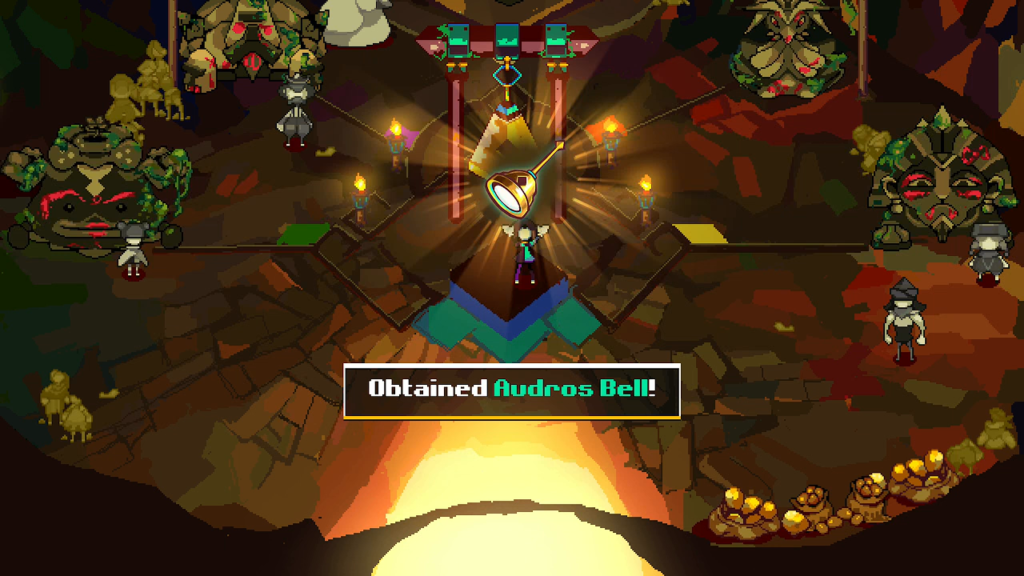
Change finally comes when the player character unexpectedly receives the Audros Bell, a huge bell attached to a long pole. Assuming the role of the prophesied Bellwielder, they enter the Dungeon. By solving the Dungeon’s puzzles and defeating its monsters, the Bellwielder seeks to restore the lost souls to their petrified bodies, find and return the missing Guardians who once made the floating island a paradise, and restore Anuchard to its former glory.
Most of Anuchard’s impactful experiences take place inside the mysterious Dungeon. The Bellwielder enters a unique wing once a chapter across ten chapters, solving puzzles and defeating enemies to reach a boss fight at the wing’s end and push the story forward.
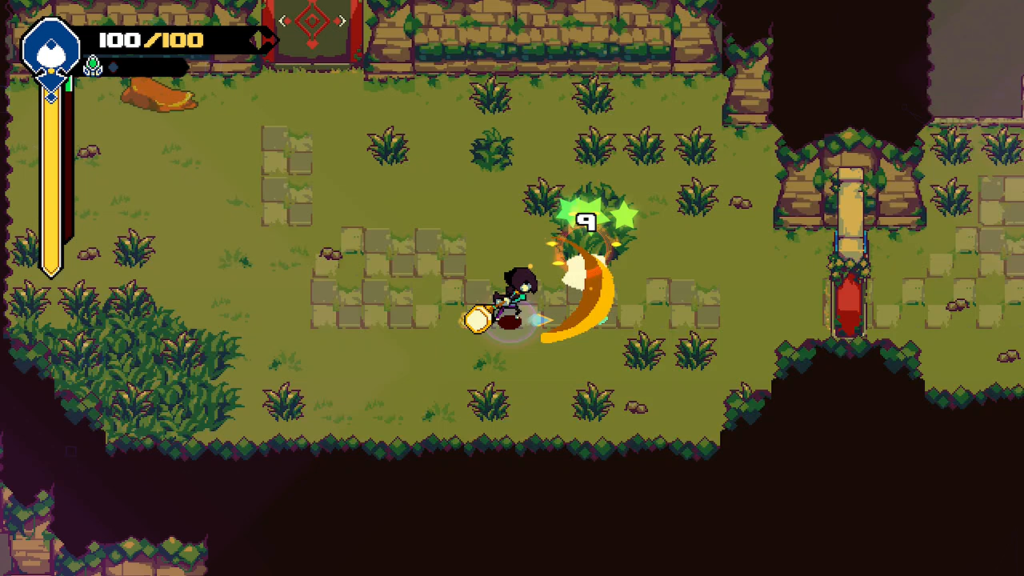
Everything the Bellwielder does in the Dungeon is built around the Audros Bell. At its most basic function, it can be swung like a club to damage monsters. When swung multiple times in succession, it forms a combo. The effects of this combo can be enhanced by meals the Bellwielder can eat in Orchard. A Potato-based dish provides a Potarang effect to the Audros Bell’s combo attack, adding a rebounding ball of energy to the final swing. A Cabbage-based dish adds the Cabboom effect, emitting a small explosion from the bell at the end of the combo. These options add a small layer of customization to exploring the Dungeon, provided I remember to send the Bellwielder to eat before they enter.
Above basic combo attacks are the Power Attacks. These send the Bellwielder lunging forward with the full weight of their body, propelling any monster it connects with across the room and damaging other monsters they impact along the way. A more urgent use for Power Attacks is to shatter the shields which protect many monsters from damage. Launching them into a wall is the only way to make them vulnerable to the basic combo attacks. The distance they travel when struck by a Power Attack is small, but with careful angling monsters can be sent ricocheting between multiple walls to accumulative effect.

The Bellwielder’s final ability is the Spire. Powered by fragments of “essence” energy hidden in omnipresent tall grass, the Spire drives a totem into the ground that provides temporary magical effects. Like eating meals, the Spire has a few available options selected before entering the Dungeon that support many potential player character loadouts. As one of these Spire options is the only way to heal the Bellwielder inside the Dungeon, it feels foolhardy to choose any other option.
Three core abilities should be plenty to drive interesting combat and puzzle scenarios if they are applied thoughtfully. Anuchard sadly lacks the creativity to do more than repetitively iterate the same scenario over and over.
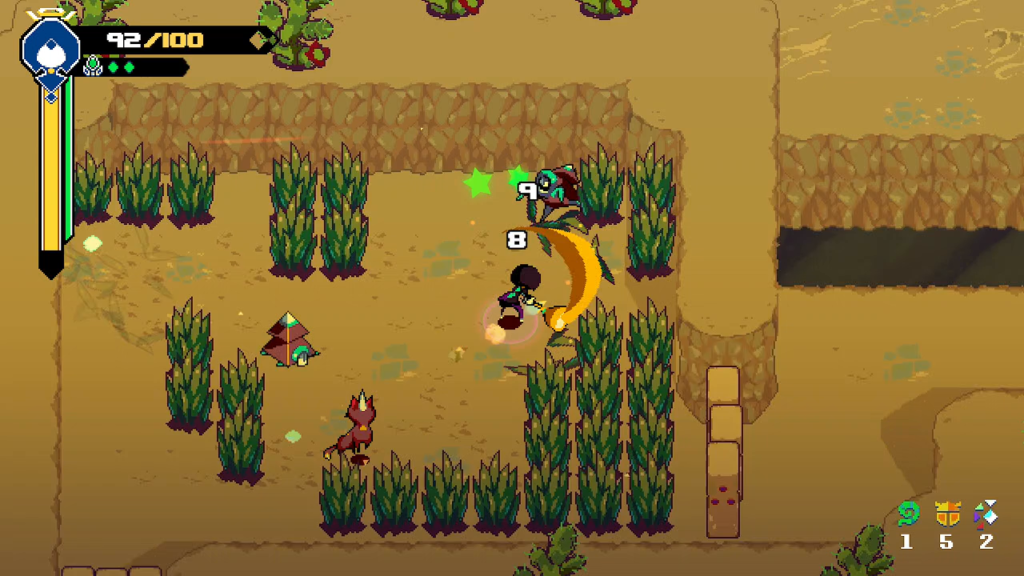
Combat suffers the worst from Anuchard’s design shortcomings. Monsters all appear in the same way: The Bellwielder enters a small space, doors slam shut trapping them inside, and they must defeat a wave of monsters before they can continue. No enemy individual or group ever appears in any other way. Anuchard knows one trick and uses it insistently long after it has stopped being interesting, let alone thrilling.
Monsters come in a variety of forms and colors. Diminutive cuboid slimes hop after the Bellwielder, crowding around their knees. Pyramids with long, slender legs make dramatic leaps on top of the Bellwielder’s head. Crystalline monsters fire projectiles from their bejeweled eyes. All undulate and twist as though they are made of gelatin and their color denotes their power and toughness. These varieties should create unique configurations requiring specialized strategies. They do not. All can be defeated by Power Attacking them into the nearest wall to remove their shields then pounding the basic attack button until they succumb.
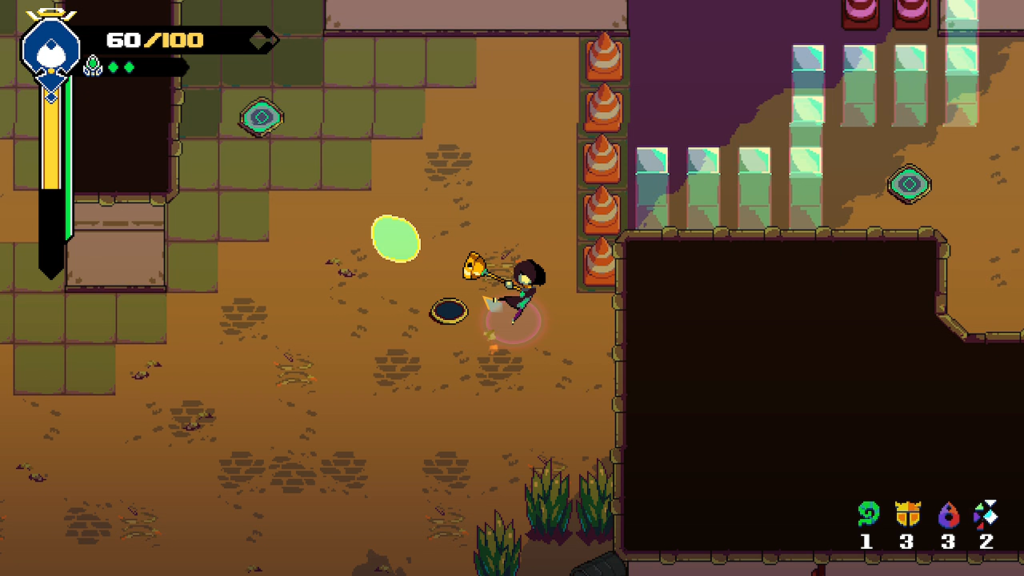
Puzzles are similarly limited. Paths through the Dungeon are blocked by gates which must be opened by activating a nearby switch. There are a few variations of this puzzle. The most interesting requires a floating bubble to be launched at an unreachable switch using the Bellwielder’s Power Attack. The bubble travels slow enough that the Bellwielder can run ahead of it and change its path with another wack from the Audros Bell. These interpretations of the one puzzle, while infrequent, are the most engaging and challenging time I have playing Anuchard, demanding precision and experimentation to find the right way to deliver a bubble to its target.
The Bellwielder’s exploits in the Dungeon feel one-note. Every small, enclosed room traps the Bellwielder inside with a group of monsters. Every door is opened by finding and activating a nearby switch. These two activities are repeated continuously and exhaustively across ten different Dungeon configurations. It would be incorrect to say the solution to every puzzle is identical, but there are few standout puzzles which make me think, “only Anuchard’s unique combination of designed features make this possible.” When it comes to the monster fights I think it would be correct to say almost all of them are identical.
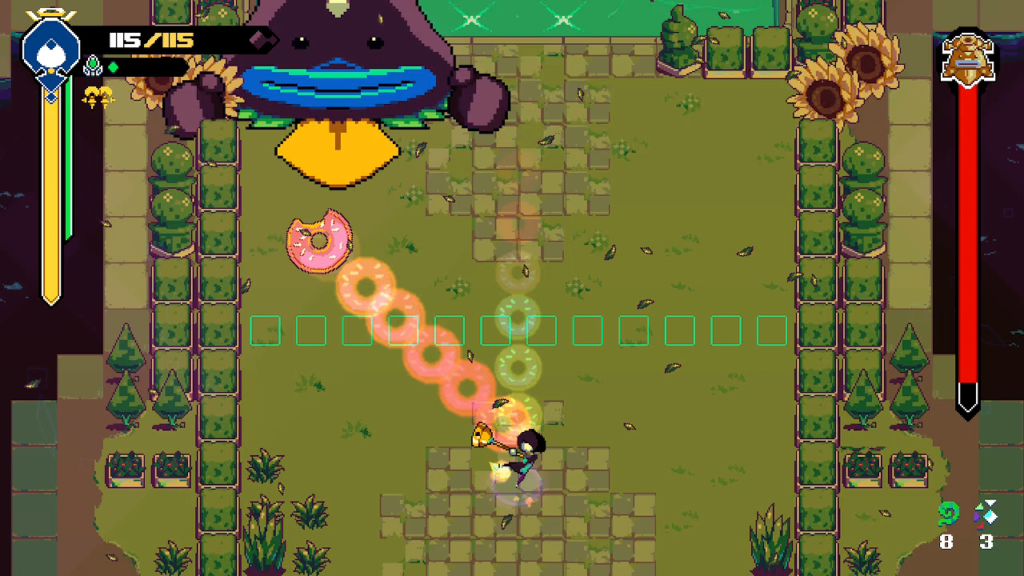
The few exceptions are the boss fights which capstone each section of the Dungeon. The Bellwielder’s quest takes them through three distinct narrative acts, or “Volumes,” and the conclusion to each pits them against a titanic boss.
I am delighted to fight these bosses because they have actual mechanics. A gluttonous giant head shaped like an eggplant flings emerald donuts at the Bellwielder, which must be rebounded back to their creator with precise swings from the Audros Bell. A fortress-like turtle bombards the Bellwielder with cannon fire while they try to knock heavy weights into its shell to lower its defenses. None of these boss designs are groundbreaking but they are at least different from the drudgery of the Dungeon proper. As much as I like them individually, I am still disappointed by them collectively; there are only four.

Time not spent in the Dungeon is spent on the expanding island of Anuchard. The Bellwielder begins with access to Orchard, their hometown, and adds two more areas as they progress through the wings of the Dungeon. The expanding landmass does a good job creating a sense of progression. When they stand on a cliff high above Orchard’s central shrine, they can see the landmass below growing with each milestone they reach.
That view is Anuchard’s growth from a detached distance. By taking a little extra care to fully explore the Dungeon, the island’s improvement is visible at a closer, more intimate level as well.
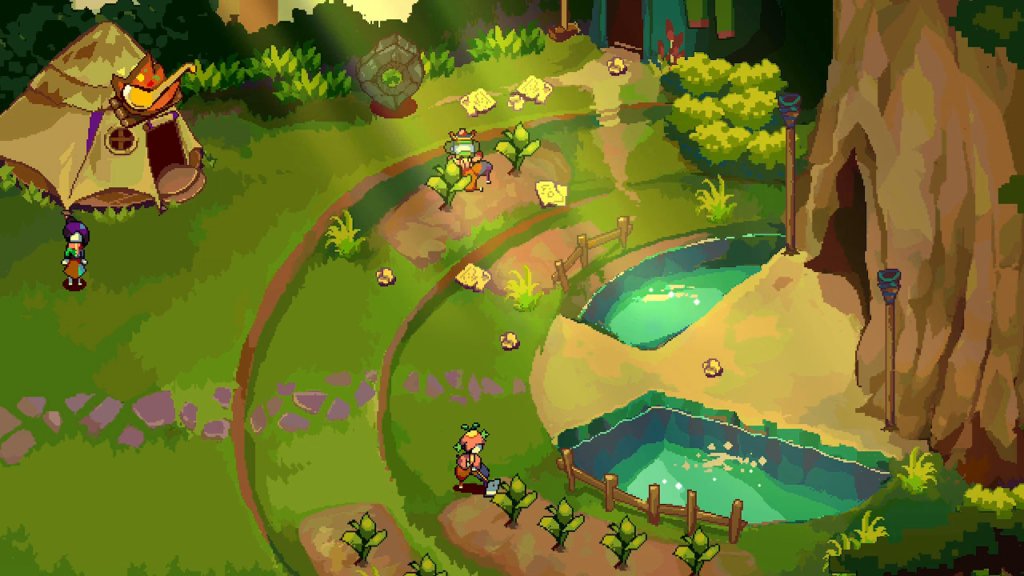
In the normal course of the story, the Bellwielder will discover the Green Guardian and return it to Anuchard, whose irritable benevolence ends the famine in Orchard. By taking the extra time and care to scour every Dungeon wing for precious stones hidden beneath tall grass and behind hidden walls, the Bellwielder can exchange these treasures in Anuchard to expand the replenished farmlands into a true revitalization of the village. Orchard’s reservoirs are refilled with crisp, clean water. Baskets of fresh vegetables are added to every screen. The village transforms from a dour and brown collection of hovels to a vibrant and welcoming hamlet bursting with renewed life. When an upgrade doesn’t improve Anuchard aesthetically, then it upgrades the Bellwielder mechanically, adding effects like generating Spire essence each time they strike an enemy.
Hidden inside the Dungeon with greater cunning than the precious stones are lost souls. Most wings contain one, and reuniting these souls with their petrified bodies back in Anuchard swells the large roster of non-player characters to bloated. Almost everyone has lost someone to the Dungeon and reuniting these families ascends the Bellwielder from a respected leader to revered icon. There are fewer lost souls than precious stones to be discovered in the Dungeon, but each individual contributes far more to the density of Anuchard’s cast than the precious stone’s aesthetic and combat upgrades do to its world.
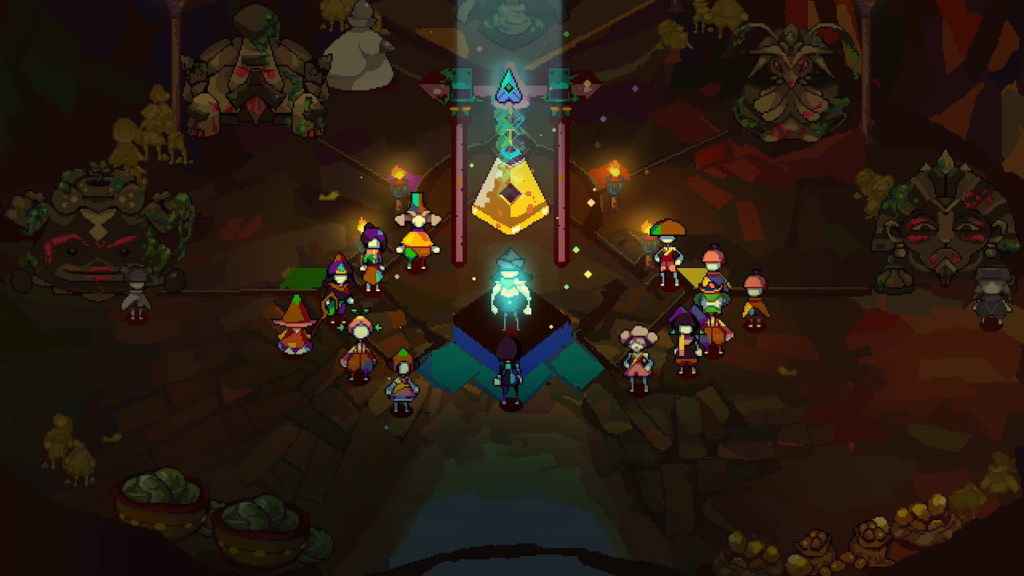
All these many non-player characters fill in the breadth and the substance of Anuchard’s plot. By focusing solely on the Bellwielder’s main mission of finding the Guardians and restoring Anuchard, I get a good sense of the world that was lost which the community works to rebuild. By inserting the Bellwielder directly into the community and interacting with them at an individual level, I get a better idea of Anuchard’s past. This is accomplished through sidequests.
There is one sidequest available in each chapter before the Bellwielder enters its Dungeon wing. From a mechanical perspective they are lingering and dull. Without exception they involve speaking with one of Anuchard’s residents or an object to begin the quest, interacting with some other NPC or object, then speaking with one or more other NPCs. They are painfully uninteresting and as the world grows in size they take longer and longer to finish. Most of the best details about Anuchard are hidden in the long dialog sequences that occur during these sidequests, but picking them all out is even more tedious than the Dungeon’s endless string of trapped rooms and locked gates.
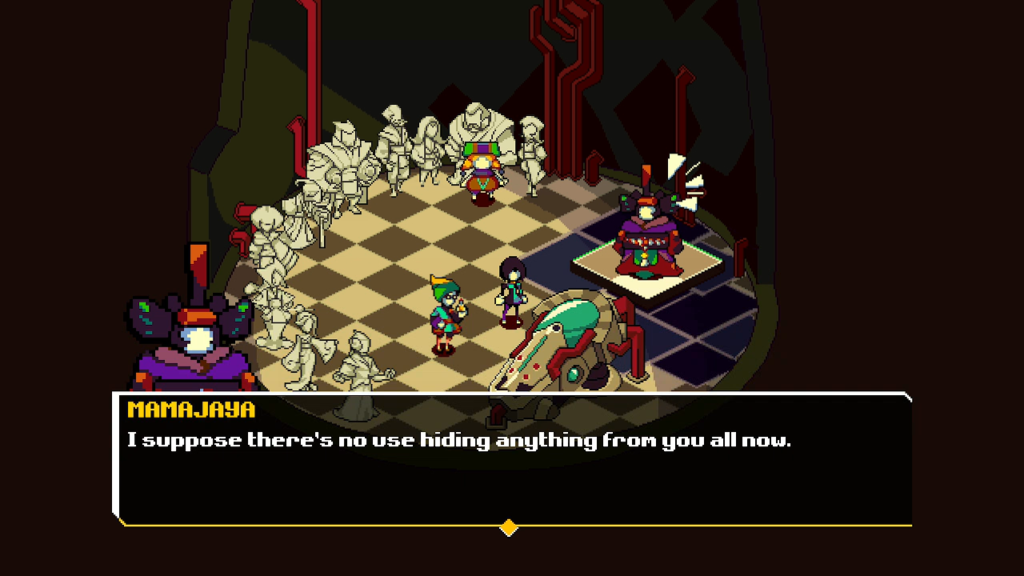
The backstory these sidequests fill in is bleak. In the plot’s middle Volume, the Bellwielder assists a colony of sentient animals who were once victimized by a powerful neighboring city. They are understandably wary of Anuchardians once again appearing in their midst. In the final Volume, the Bellwielder actually travels to that city and finds that its few remaining residents haven’t changed much in their attitudes. To make them even more unsympathetic they’ve done something even worse to their own citizens to survive the disappearance of the Guardians. All these details make me wonder if Anuchard is worth restoring, but the Bellwielder is obligated to help them all anyway.
The only meaningful choice the Bellwielder is allowed to make comes at the story’s very end. After restoring all of Anuchard and returning the missing Guardians to their positions of power, the Bellwielder is presented with two choices. The ending that follows either choice is brief and anticlimactic. Both endings can be obtained in short order by reloading the last save and quickly defeating the final boss. I feel nothing about either choice because my only impression of Anuchard has been its unpleasant residents, arrogant and uncaring Guardians, and boring Dungeon.
I can sometimes find some enjoyment from a videogame if its setting or story is interesting even if its design is not. Anuchard begins with a promising prologue, but ultimately fumbles these aspects as well.
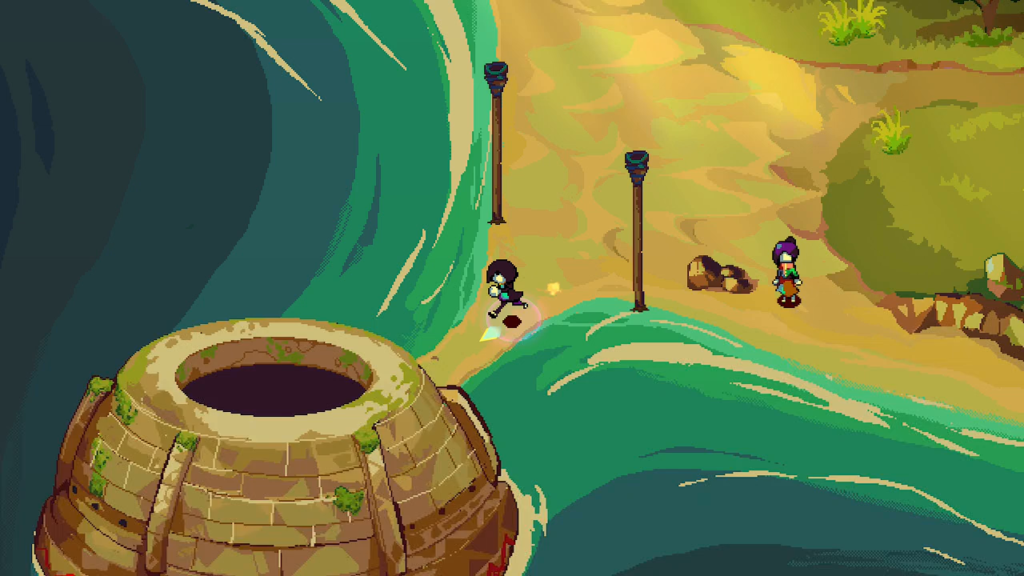
I am determined to describe at least one completely positive feeling I have about Anuchard, and for that I turn to its soundtrack. They deftly combine Anuchard’s aesthetic elements to produce an appropriate soundtrack.
Anuchard utilizes retro 16-bit pixel graphics that evoke to my inexpert eye the style of watercolor paintings. The soundtrack takes that graphical era for its inspiration, building itself on chiptune melodies that would sound at home on consoles of the mid-1990s. It is the embellishments which make it more grand. Recognizing the significance of the Audros Bell and the player character’s role as the Bellwielder, many songs are accompanied by orchestra bells that are captured at a much higher quality than the melody’s obvious electronic sourcing. While exploring the Dungeon, its danger and mystery is emphasized with deeper sounds and ominous distortions.
I don’t want to be too cruel about the rest of Anuchard’s elements, as much as I dislike them, but while playing I often feel like the soundtrack is the only part that was made with any amount of passion.
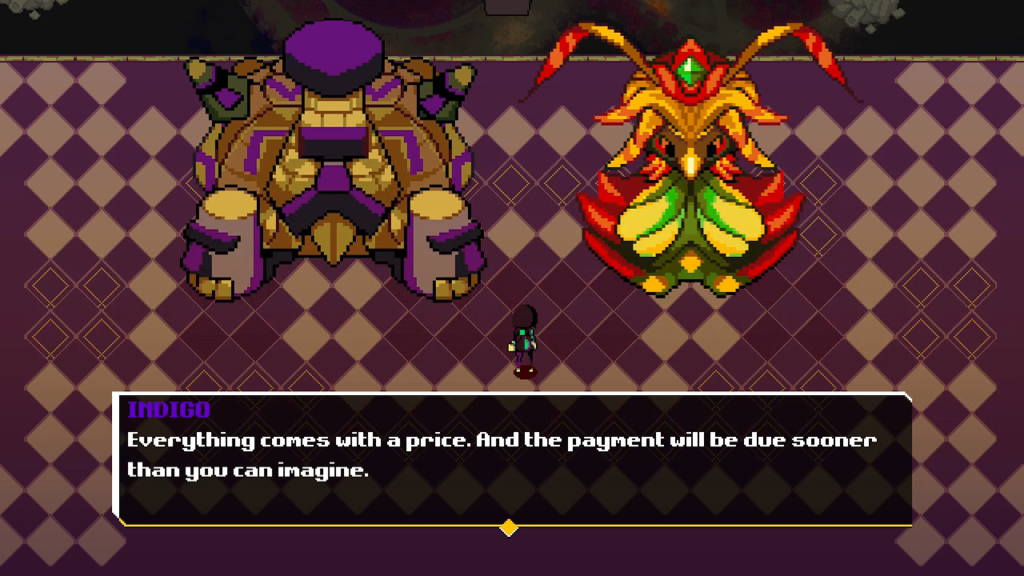
I see a lot of potential in Anuchard. The setting is intriguing and its constant growth alongside the Bellwielder’s progress creates many opportunities for an interesting world to reveal itself. The Dungeon is a void-bound enigma where souls become lost in both time and space that could host mind-bending dreamscapes of adventure. The potential of these elements are squandered. There’s a story where not much happens to a lot of unlovable characters. There’s a Dungeon where the same thing keeps happening to both player and player character over and over. The feelings which overwhelm almost all my time with Anuchard are boredom and indifference.